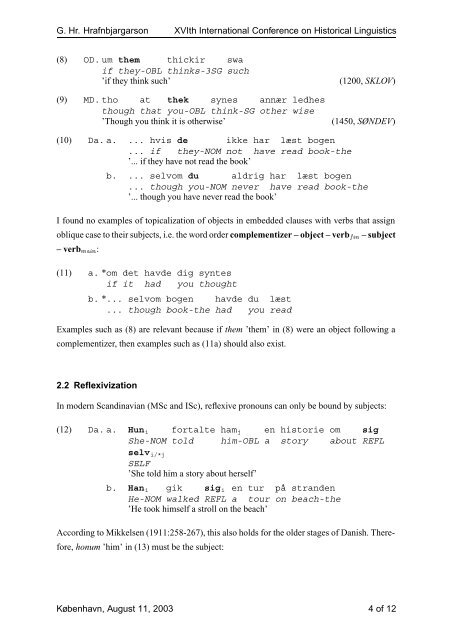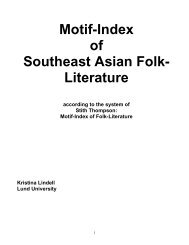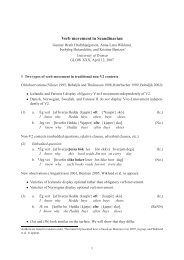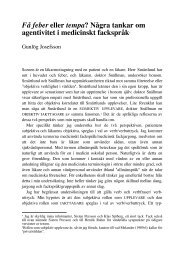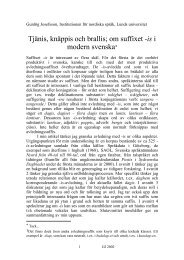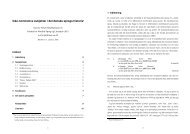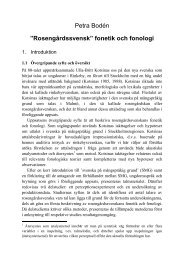Non-Nominative Subjects in Old and Middle Danish
Non-Nominative Subjects in Old and Middle Danish
Non-Nominative Subjects in Old and Middle Danish
Create successful ePaper yourself
Turn your PDF publications into a flip-book with our unique Google optimized e-Paper software.
G. Hr. Hrafnbjargarson XVIth International Conference on Historical L<strong>in</strong>guistics<br />
(8) OD. um them thickir swa<br />
if they-OBL th<strong>in</strong>ks-3SG such<br />
’if they th<strong>in</strong>k such’<br />
(9) MD. tho at thek synes annær ledhes<br />
though that you-OBL th<strong>in</strong>k-SG other wise<br />
’Though you th<strong>in</strong>k it is otherwise’<br />
(1200, SKLOV)<br />
(1450, SØNDEV)<br />
(10) Da. a. ... hvis de ikke<br />
... if they-NOM not<br />
’... if they have not read the book’<br />
b. ... selvom du aldrig har<br />
... though you-NOM never have<br />
’... though you have never read the book’<br />
har læst bogen<br />
have read book-the<br />
læst bogen<br />
read book-the<br />
I found no examples of topicalization of objects <strong>in</strong> embedded clauses with verbs that assign<br />
oblique case to their subjects, i.e. the word order complementizer – object – verb Ò – subject<br />
– verb ÑÒ :<br />
(11) a. *om det<br />
if it<br />
b. *...<br />
...<br />
havde<br />
had<br />
dig syntes<br />
you thought<br />
selvom bogen havde<br />
though book-the had<br />
du læst<br />
you read<br />
Examples such as (8) are relevant because if them ’them’ <strong>in</strong> (8) were an object follow<strong>in</strong>g a<br />
complementizer, then examples such as (11a) should also exist.<br />
2.2 Reflexivization<br />
In modern Sc<strong>and</strong><strong>in</strong>avian (MSc <strong>and</strong> ISc), reflexive pronouns can only be bound by subjects:<br />
(12) Da. a. Hun i fortalte<br />
She-NOM told<br />
ham j en<br />
him-OBL a<br />
selv i/*j<br />
SELF<br />
’She told him a story about herself’<br />
b. Han i gik sig i en tur<br />
He-NOM walked REFL a tour<br />
’He took himself a stroll on the beach’<br />
historie<br />
story<br />
på str<strong>and</strong>en<br />
on beach-the<br />
om sig<br />
about REFL<br />
Accord<strong>in</strong>g to Mikkelsen (1911:258-267), this also holds for the older stages of <strong>Danish</strong>. Therefore,<br />
honum ’him’ <strong>in</strong> (13) must be the subject:<br />
København, August 11, 2003 4 of 12


